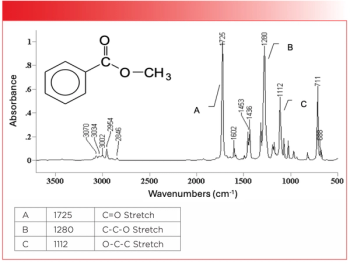
- March 2022
- Volume 37
- Issue 3
- Pages: 22–23
Using Portable X-ray Fluorescence Spectrometry (PXRF) to Explore the Origins of the Sarsen Megaliths at Stonehenge
What can spectroscopic techniques, such as portable X-ray fluorescence spectrometry (PXRF), reveal about the sarsen megaliths of Stonehenge and where they originated?
Stonehenge is a prehistoric monument that is considered a British cultural icon and one of the most famous landmarks in Europe. The origin of the sarsen megaliths that comprise Stonehenge have interested archaeologists for decades. What can spectroscopic techniques, such as portable X-ray fluorescence spectrometry (PXRF), reveal about the sarsen megaliths and where they originated? David Nash, a professor of physical geography at the University of Brighton in Brighton, United Kingdom, is exploring this question. We recently spoke with Professor Nash about his team’s discovery and what it means for the future of archaeology.
The major conclusion that was drawn from your research is that the sarsen megaliths that form the primary architecture of Stonehenge most likely originated from the West Woods, Wiltshire, approximately 25 km north of the Stonehenge site (1). How did your team arrive at this inference and how certain are you of this result?
We arrived at the inference that West Woods was the likely source for the Stonehenge megaliths in our
In your study, your team used PXRF to provide an initial chemical characterization of the sarsen uprights and lintel stones. Why was PXRF the best technique to use for this analysis as compared to other field or laboratory methods?
Stonehenge is a highly protected site, and it is not possible to sample stone from the monument today. Therefore, we had to use a portable technique to ascertain the chemical variability at the monument. Personally, I would not use a technique such as PXRF to compare the chemistry of sarsen stones at Stonehenge and those in other areas. However, PXRF works well for intercomparison of stones at Stonehenge because we know that the stones were erected at roughly the same time and have been exposed to the same degree of natural weathering over the last 4500 years.
Numerous studies in the past have explored plausible explanations for where the stones that comprise Stonehenge came from. What did you do in this study that is unique from what other researchers have done?
Previous studies that have sought to identify where the sarsen stones at Stonehenge came from have been largely speculative. Archaeological studies, for example, have tried to identify hollows that could be quarry sites. Our research was the first ever to utilize chemical data to provenance the stones. This kind of work is widespread in other branches of archaeology, particularly those concerned with the analysis of stone tools, but had never been applied in the context of the British Neolithic.
Your research provided an in-depth characterization of the sedimentology, mineralogy, and geochemistry of a known sarsen megalith at Stonehenge (2). What challenges did you face in using ICP-MS and ICP–atomic emission spectrometry (AES) to generate precise whole-rock geochemical data?
Both our
You and your team used a various number of analytical techniques besides PXRF, ICP-MS, and ICP-AES, including X-ray computed tomography (CT) imaging and high-resolution scanning electron microscopy (SEM) with cathodoluminescence (CL) and energy-dispersive (EDS), and automated SEM-EDS mineral analysis (QEMSCAN). Why were so many techniques used and what data were most valuable to infer origin of the samples?
Our 2021 study provides the first detailed characterization of the petrography, mineralogy, and geochemistry of a sarsen at Stonehenge. Given that the core from Stone 58 was of national and international importance, we wanted to make sure that we applied every state-of-the-art analytical technique to it as possible. We had already published the geochemical data linking the Stonehenge sarsens to West Woods. However, the use of other techniques allowed us to obtain much more detail about the stone. For example, CT imaging allowed us to explore the sedimentary structure of the rock, and thin section analysis enabled us to investigate the distribution of different types of minerals and quartz cements within the stone. We also conducted cathodoluminescence analysis under an SEM to explore the different phases of quartz cement development within the rock. This analysis led to one of the most interesting sets of results from the study in my opinion because it showed that the quartz cements had developed over at least 16 cycles of precipitation. Finally, we used isotope analyses to identify the potential sources of the mineral grains within the stone. The legacy of using this battery of different techniques is that we now have a suite of data that we can use, in addition to geochemical analysis, to refine the potential source areas for the sarsen stones.
Are there still further mysteries surrounding Stonehenge that your team is interested in exploring in a future study?
There is still a lot of work to be done. Most obviously, we would like to refine the source area for the sarsen stones and see if we can identify where the two “unknown” stones originated.
What are your next steps in this work? How have your findings impacted archaeological and geographical research going forward?
The main impact of our research is finally putting a dot on the map for the main source of sarsens at Stonehenge. This now allows us to draw more informed inferences about the routes that the stones took on their way to Stonehenge. Before the publication of our results in 2020, all proposed route maps were purely supposition. Now we have a starting point for the journey of the stones. We also have a geochemical technique that we can apply to other monuments made of sarsen within the wider Stonehenge landscape. It would be fascinating to see if the people who constructed the sarsen circle and avenue at Avebury, for example, obtained their stone from the same areas as the Neolithic peoples who built Stonehenge.
References
(1) D.J. Nash, T.J.R. Ciborowski, J.S. Ullyott, M.P. Pearson, T. Darvill, S. Greaney, G. Maniatis, and K.A. Whitaker, Sci. Adv. 6(31), eabc0133 (2020). DOI:
(2) D.J. Nash, T.J.R. Ciborowski, T. Darvill, M.P. Pearson, J.S. Ullyott, M. Damaschke, J.A. Evans, S. Goderis, S. Greaney, J.M. Huggett, R.A. Ixer, D. Pirrie, M.R. Power, T. Saige, and N. Wilkinson, PLoS One 16(8), e0254760 (2021). DOI:
Articles in this issue
almost 4 years ago
The Infrared Spectra of Polymers V: Epoxiesalmost 4 years ago
The 2022 Employment and Salary Survey: Looking for a Return to NormalcyNewsletter
Get essential updates on the latest spectroscopy technologies, regulatory standards, and best practices—subscribe today to Spectroscopy.




